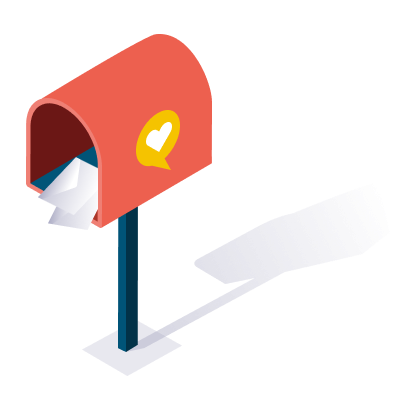Jaimin Kapadia
Jaimin Kapadia is the founder of Awesome Wearable Devices - a credible online resource that moves past the hype and provides honest assessments about new and upcoming wearable gadgets in a simple, honest way.
Elevate sales with intent data! Optimize content for high-quality leads. Learn more in this insightful blog. Let's dive in!
You probably know that inbound leads are more valuable than ever before. But as a business owner or marketer, you must find ways to generate more high-quality leads that convert into sales.
One effective method is to use intent data to understand what your potential customers are searching for and optimize your content for search intent. In this blog post, I'll explain intent data, how it can help your business, and a step-by-step process to drive more inbound leads.
With that said, let's jump right in!
Intent data refers to the digital signals that show what your potential customers are interested in or actively searching for online. It captures the "intent" behind web searches, social media activity, and how people interact with your website or email.
There are plenty of different intent data signals you must be aware of:
In a nutshell, intent data reveals what your audience wants to learn or buy. It enables you to identify prospects actively exploring solutions so you can provide relevant information to them right when they need it most. This almost always results in more inbound leads!
Now that you know what intent data means, let's quickly understand how they helps increase inbound leads for your business. As explained earlier, intent data provides invaluable insights to help you generate more quality inbound leads in a few key ways:
As a business owner, you want to understand what your potential customers wish to do when researching your products or services online. If you learn to figure out their questions and needs, you can create content that gives them the answers and information they want.
For example, you can write blog posts, FAQs, ebooks, and other content that directly addresses your prospects' questions and concerns during their research process. Creating content that speaks directly to your potential customers and their needs will resonate more with them.
This helpful, relevant content can convert more researchers into leads because it shows them that your business understands and can meet their needs. Remember, the key is putting yourself in your potential customers' shoes to understand their intent and questions.
Then, you can create content that answers them and converts more prospects by addressing their needs.
Understanding what keywords and phrases people use to search online allows you to understand what your potential customers are trying to find.
For example, people may search for "beginner yoga poses" or "yoga for flexibility." This shows they intend to find introductory yoga content to improve flexibility. So, you could create a blog post or video that teaches beginner poses for flexibility.
When you create content that answers the exact questions and needs your audience has, it will resonate more with them. This is because your content shows you understand what they are looking for. This builds trust and makes them more likely to convert into leads and customers.
You can also use search intent data to inform your lead generation offers. You may see searches for "yoga teacher training certification." This shows intent to find certification programs. Your lead gen offer could be a free checklist on choosing a yoga teacher training.
When your offers directly match what people seek, they will convert better.
You can also use intent data to make your outreach to potential customers more personalized and relevant.
For example, you may see from search data that a lead is interested in "Nike Run Club compatible watches that can track yoga workouts." This intent data gives you insight into their specific interests and needs.
You can then use this information to tailor and personalize your outreach messages and offers to each unique lead. So, for the lead interested in smartwatches that track yoga workouts, you could say, "I noticed you were looking for smartwatches for yoga. Here is a link to the best smartwatches for yoga enthusiasts."
When you include specific details that show you understand their interests, your outreach will be much more relevant to each prospect. Simply put, Personalized messages that speak directly to their intents and needs are more likely to get opened and generate responses.
Here's the step-by-step process for using intent data to increase inbound leads.
To increase inbound leads, you first need to determine the keywords and topics that show intent for your ideal customers. Look at the content on your website that already performs well and brings in leads. What keywords and topics do those pieces focus on?
This shows what your potential customers are interested in and want to learn about. You can also use Google's Keyword Planner tool to discover new keywords and phrases that people are searching for that are related to your business.
The Keyword Planner will show you monthly search volumes for different terms. List the top keywords and intent topics that indicate what your ideal customers want to know. For example, if you sell yoga leggings, your list may include "comfortable yoga pants," "affordable yoga leggings," and "best yoga leggings for curvy body types."
The goal is to compile a list of the specific keywords and intent topics that show what your potential customers are interested in and want to learn about. This list will guide you in creating content that aligns with their intent and converts more inbound leads.
Once you compile a list of crucial customer intent keywords, take the next step by gathering data on the frequency of searches for those words and phrases. Google Trends is a free tool that shows search volume patterns and keyword trends over time. It helps get basic search data.
Some paid tools like SEMrush give you more in-depth search volume information. These tools show you the exact monthly search volumes for each keyword. In addition to search data, look at your website and social media analytics. See which blog posts, landing pages, and social content focusing on your intent keywords perform well.
Review all of this data over several months to spot opportunities. For example, you may notice that the search volume for "yoga for seniors" is rising steadily. That indicates it could be a good keyword to target more content around.
Analyzing search volume patterns and your site analytics on your critical intent keywords will reveal areas of opportunity to focus your content creation and optimization efforts.
The goal is to use data to identify customer intent keywords with high search volume and traction but don't have much content yet. Targeting these high-potential topics will get your content in front of more interested people.
Once you've analyzed the data to identify your top customer intent keywords, it's time to create optimized content around those topics. Write new blog posts, guides, FAQ pages, and other content formats focused on your top-performing intent keywords.
Make sure to include those target phrases naturally throughout each piece. Also, be sure to optimize your on-page SEO elements and metadata for each new content asset:
Publishing intent-aligned content when search volume peaks for those terms can help increase visibility and leads. Remember, the goal is to develop content tailored directly to your audience's key questions and interests, as revealed by their search intent.
Optimizing this content, both on-page and in metadata, will help get it found by your ideal prospects.
Now that you've created optimized content built around your audience's intent, it's time to promote it. You can use multiple channels to get your content in front of people actively searching those topics.
For starters, you can consider:
The key is actively promoting your intent content across channels, with extra emphasis during high-volume periods. This gets your content to people when they have the highest intent to learn about those topics.
For example, search demand for "yoga for flexibility" may peak in January when people have New Year's fitness goals. This increases conversions by getting your content in front of the right people at the right time.
Now that you've created and promoted content tailored to your audience's intent, you must add elements to convert that traffic into leads. This includes lead generation offers, forms, and clear calls-to-actions (CTAs) in your intent blog posts, guides, and other content such as:
The goal is to provide people with exactly what they are looking for when they find your content focused on their high-intent keywords. Fulfilling that intent converts researchers into leads. For instance, someone searching for "yoga videos for beginners" highly intends to learn.
An opt-in offer to email them weekly yoga tips after downloading a starter video can capture that lead.
The process doesn't stop once you've converted high-intent visitors into leads. You must continue nurturing those leads by following up with relevance and personalization. Use the intent data you have about each new lead to tailor your ongoing engagement:
Remember, the goal is to continue the conversation with leads by providing ongoing value tailored to their interests. This shows you understand their needs and positions you as a trusted resource.
For example, send a lead who downloaded a "yoga for seniors" video with more content related to their needs, like beginner poses and breathing tips. Simply put, staying engaged with relevant follow-up matched to each lead's intent will nurture them toward becoming customers.
Using intent data to drive inbound leads takes work but pays off tremendously. While gathering and analyzing intent signals, creating custom content, and continually engaging leads take effort, the impact on your inbound lead generation makes it well worth it.
If you make using intent data an integral part of your marketing strategy, it will significantly increase your leads over time.
You’ll also receive some of our best posts today

Jaimin Kapadia is the founder of Awesome Wearable Devices - a credible online resource that moves past the hype and provides honest assessments about new and upcoming wearable gadgets in a simple, honest way.

Mobile devices have become an integral part of our lives in this digital...
Don’t miss the new articles!